 I used to get requests for “technique” pages based on images that I had posted when I did monthly updates. This one received a record number of requests!
I used to get requests for “technique” pages based on images that I had posted when I did monthly updates. This one received a record number of requests!
Jacqueline Wilson is one of the world’s best selling childrens’ authors. I had to take pictures of her twice in ten days and the first set of pictures (including the left had one below) were taken at a press launch for the UK’s National Fostering Fortnight – a charity of which she is a supporter. A few days later I went to her home in Surrey to take some different pictures and amongst them was this one of her looking through one of the many boxes of childrens’ letters that she gets every month.
I did some evenly lit pictures of the author looking through the letters, some close ups of her hands wearing her trade mark rings sorting through papers and then I had the idea of getting her to look into the box and to make it “magical” in the same way that her books grab the imagination of children. After a few frames of evenly lit pictures I decided to place a second flash unit inside the box, mainly to give her face better highlights. Balancing the Lumedyne flash that I had been using on it’s own with the Canon 550ex speedlight placed inside the box was a relatively simple task and with both flash units attached to Pocket Wizard receivers everything went pretty easily. (more…)

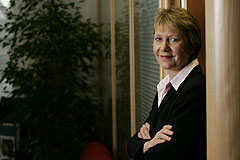 One of the classic lines that you’ll read in most lighting manuals is that “there’s only one sun in the sky”. You cannot argue with that but there are often times when a second light source used with subtlety can really boost an otherwise OK image. This technique example is a bit of a recap on a couple of earlier ones, but I thought that it would make the point about adding a bit of a “kick light” very well. It was a simple and straight forward enough job – ten minute portrait of somebody not very well known outside her own field of expertise and not used to having her picture taken. The room was less than inspiring but had a couple of plants and some windows and so was a more than adequate venue to make a decent portrait.
One of the classic lines that you’ll read in most lighting manuals is that “there’s only one sun in the sky”. You cannot argue with that but there are often times when a second light source used with subtlety can really boost an otherwise OK image. This technique example is a bit of a recap on a couple of earlier ones, but I thought that it would make the point about adding a bit of a “kick light” very well. It was a simple and straight forward enough job – ten minute portrait of somebody not very well known outside her own field of expertise and not used to having her picture taken. The room was less than inspiring but had a couple of plants and some windows and so was a more than adequate venue to make a decent portrait.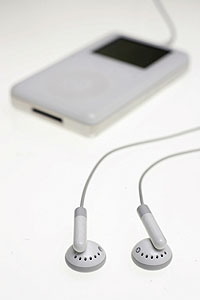

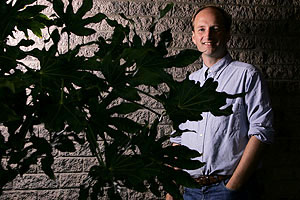 Sometimes you have too persuade people to have their photograph taken in places that they would never have chosen for themselves. This can sometimes be because you, as the photographer, are being awkward or it can be because you are trying to say something about the subject in tricky surroundings.
Sometimes you have too persuade people to have their photograph taken in places that they would never have chosen for themselves. This can sometimes be because you, as the photographer, are being awkward or it can be because you are trying to say something about the subject in tricky surroundings.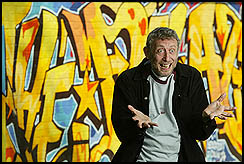
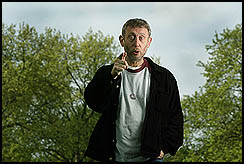
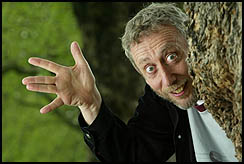
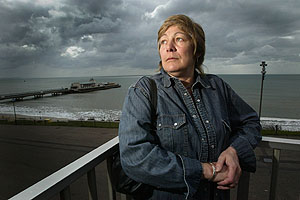
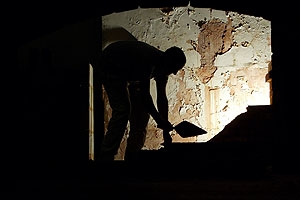 One of the very first technique pages that I posted on this site was about silhouettes. I mentioned that they were great for keeping people anonymous where there were child protection issues and legal issues over indentifying people. On rare occasions you go to shoot a story and nobody is willing to have their picture taken – they don’t want to be in the newspaper!
One of the very first technique pages that I posted on this site was about silhouettes. I mentioned that they were great for keeping people anonymous where there were child protection issues and legal issues over indentifying people. On rare occasions you go to shoot a story and nobody is willing to have their picture taken – they don’t want to be in the newspaper!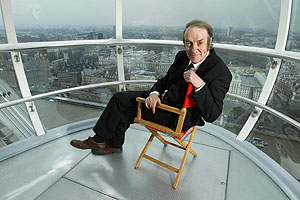 The previous technique example mentioned the fact that I get to shoot portraits in the most amazing places and just to emphasise that point here is another on.
The previous technique example mentioned the fact that I get to shoot portraits in the most amazing places and just to emphasise that point here is another on.
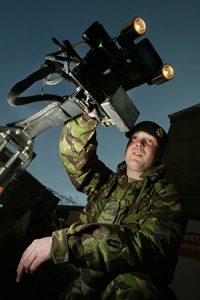 When you have to walk through one of the most impressive buildings in central London, out of the back door to where they keep the broken furniture and litter bins to shoot your picture… you feel a little hard done by!
When you have to walk through one of the most impressive buildings in central London, out of the back door to where they keep the broken furniture and litter bins to shoot your picture… you feel a little hard done by!